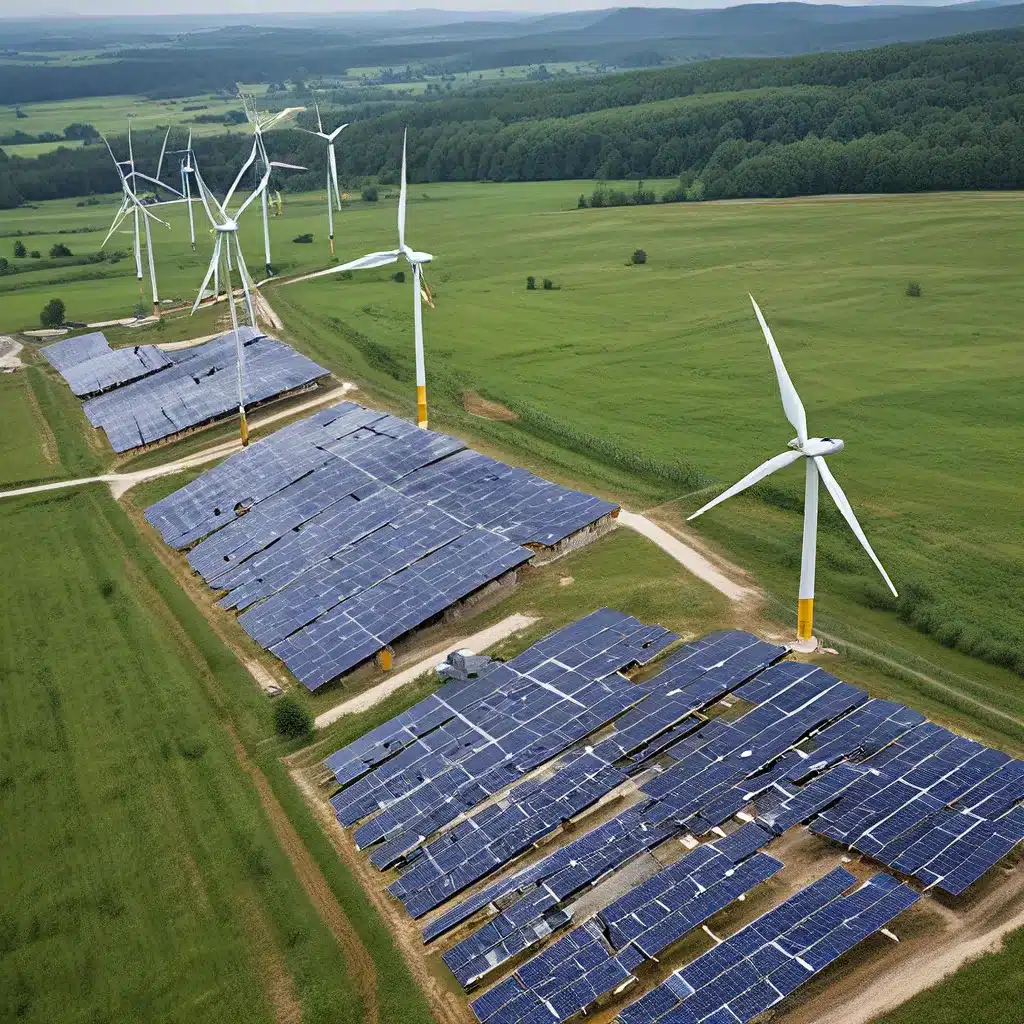
Navigating the Maze of Renewable Energy Permitting
As the world races towards a sustainable energy future, the deployment of renewable energy projects at scale has become a critical priority. However, the journey from concept to reality is often fraught with a new set of challenges – institutional and social barriers that have emerged as the primary obstacles to renewable energy development.
Gone are the days when technical and economic factors were the primary roadblocks. Today, renewable energy projects must navigate a complex web of regional, state, and local-level processes required for obtaining the necessary approvals. These institutional barriers can create significant delays and, in some cases, even block project development entirely.
But the challenges don’t end there. Social barriers stemming from local and organizational opposition can also throw a wrench in the works, further complicating the path to renewable energy deployment.
As a renewable energy enthusiast, I’ve been closely following the efforts of organizations like the Clean Air Task Force (CATF), Natural Resources Defense Council (NRDC), and The Nature Conservancy (TNC) as they work to address these pressing issues. Their recent study, conducted by the renowned consulting firm E3 (Energy and Environmental Economics, Inc.), has provided a roadmap for overcoming the siting and permitting obstacles that have hindered renewable energy progress.
Streamlining the “One-Stop Shop” for Renewable Energy Permitting
According to the E3 study, the overarching framework that best supports the development of renewable energy is a one-stop shop for permitting. This means consolidating the various regulatory processes into a single, coordinated effort, making it easier for project developers to navigate the system.
But that’s just the beginning. The study also emphasizes the importance of clear and consistent requirements for permit approvals. When permitting decision-makers have a well-defined set of criteria to evaluate projects, they can issue permits in a timely manner if a project meets the necessary standards.
These standards should encompass a range of factors, from siting considerations and community engagement to community benefits and environmental impact mitigation. By addressing these key elements upfront, the permitting process can be streamlined, reducing delays and uncertainty for renewable energy developers.
Maximizing Community Benefits and Minimizing Environmental Impacts
One of the critical findings from the E3 study is the need to prioritize community engagement and community benefits as part of the renewable energy siting and permitting process.
Early and frequent community engagement is essential in building trust and addressing local concerns. By involving the community from the outset, developers can better understand the needs and priorities of the host communities, and work to incorporate their input into the project design.
Moreover, providing financial or other material benefits to local communities can help ensure that the deployment of renewable energy projects truly serves the best interests of the people who will be most impacted. This could include job creation, tax revenue, or direct investments in local infrastructure and services.
At the same time, the study emphasizes the importance of considering environmental impacts and mitigation strategies as part of the permitting process. Renewable energy projects, while inherently cleaner than fossil fuels, can still have some environmental implications that need to be thoroughly addressed.
By striking the right balance between community benefits and environmental stewardship, renewable energy projects can become true catalysts for sustainable development, rather than sources of contention and conflict.
Harnessing the Power of Policy and Technology
The E3 study also highlights the pivotal role that policy and technology can play in overcoming the regulatory hurdles to renewable energy development.
On the policy front, streamlining the permitting process through improved coordination between government agencies, simplified application procedures, and clear guidelines can go a long way in reducing delays and frustration for project developers.
Moreover, policy reforms that prioritize renewable energy deployment, such as expedited permit approvals for projects that meet specific criteria, can send a strong signal to the market and encourage further investment in this vital sector.
But policy alone is not enough. Technological solutions are also emerging as powerful tools in the fight against permitting barriers. Companies like LandGate, for example, are leveraging comprehensive property data and software solutions to help renewable energy developers identify suitable sites, assess potential environmental impacts, and navigate the permitting process more efficiently.
By combining strategic policy initiatives with innovative technological approaches, we can create a more streamlined, transparent, and community-centric renewable energy siting and permitting landscape – one that accelerates the deployment of clean energy projects and brings us closer to a sustainable energy future.
The Road Ahead: Navigating Uncertainties and Embracing Ongoing Progress
As we look to the future, it’s clear that the journey towards widespread renewable energy deployment is far from a straight line. The regulatory landscape is constantly evolving, and new challenges are likely to emerge as the clean energy transition gains momentum.
However, the findings from the E3 study provide a solid foundation for navigating these uncertainties and overcoming the regulatory hurdles that have historically hindered renewable energy development.
By prioritizing community engagement, maximizing local benefits, and minimizing environmental impacts, while also leveraging the power of policy reforms and technological solutions, we can create a more equitable and sustainable path forward for renewable energy projects.
And as we continue to learn and adapt, it’s important to embrace the ongoing progress in this dynamic field. Renewable energy technologies are rapidly evolving, regulatory frameworks are being refined, and public attitudes are shifting in favor of clean energy solutions.
So, let’s keep our eyes on the horizon, and work together to unlock the full potential of renewable energy – for the sake of our communities, our environment, and our shared sustainable future.
Explore our renewable energy solutions to see how we can support your journey towards a clean energy future.

